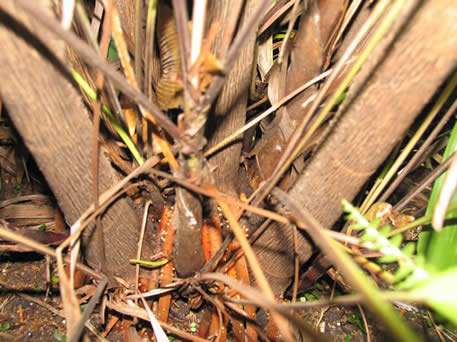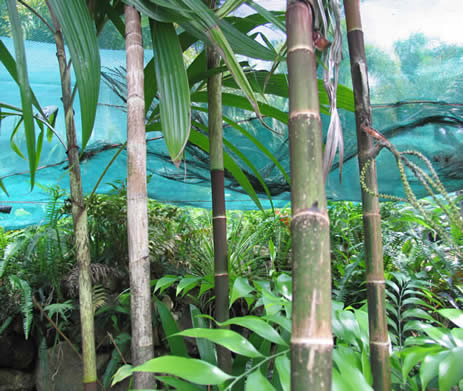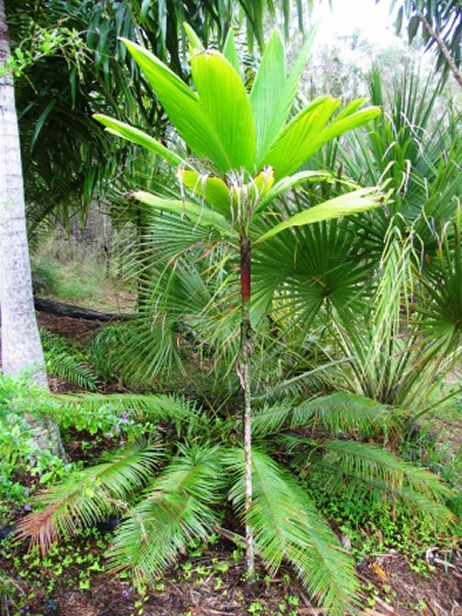






Dypsis paludosa
A steady growing species that forms a nice thick clump and grows to around 4 to 5m tall, this species grows very well in the subtropics and looks it’s best in a protected area and will take full sun, as a juvenile the crownshaft's of the true species has lovely maroon stripes but fades with age to a yellowish coloured crownshaft with tuffs of brown tomentum as shown in the first photo, the entire leaf species has a lovely maroon coloured crownshaft and and is a much more robust palm, the trunk will be green like bamboo but with age will change colour and wood up," turning brown". There seems to be two different species/forms of this species that look totally different that only become quite clear with age and when planted in full sun, the form with the near entire leaves with the maroon coloured crownshaft with no petioles, seems to be a different species and is by far a more spectacular species/form. Both these species/forms make great landscaping palms and would be worth trying.
This species has been known or sold under the name Dypsis florencei in the past.
We have a limited amount of both these species/forms available now!!